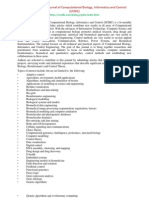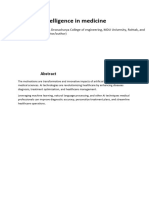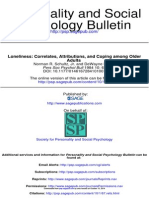0% found this document useful (0 votes)
28 views6 pagesAssignment Env
The document discusses the intersection of biological science with artificial intelligence (AI) and data science, highlighting key areas such as neural networks, computational biology, bioinformatics, and biomedical imaging. It emphasizes the potential advancements in healthcare, personalized medicine, and robotics, while also addressing ethical considerations in the application of these technologies. The future of this interdisciplinary field promises significant breakthroughs and improved technological solutions across various domains.
Uploaded by
monugupta002001Copyright
© © All Rights Reserved
We take content rights seriously. If you suspect this is your content, claim it here.
Available Formats
Download as DOCX, PDF, TXT or read online on Scribd
0% found this document useful (0 votes)
28 views6 pagesAssignment Env
The document discusses the intersection of biological science with artificial intelligence (AI) and data science, highlighting key areas such as neural networks, computational biology, bioinformatics, and biomedical imaging. It emphasizes the potential advancements in healthcare, personalized medicine, and robotics, while also addressing ethical considerations in the application of these technologies. The future of this interdisciplinary field promises significant breakthroughs and improved technological solutions across various domains.
Uploaded by
monugupta002001Copyright
© © All Rights Reserved
We take content rights seriously. If you suspect this is your content, claim it here.
Available Formats
Download as DOCX, PDF, TXT or read online on Scribd
/ 6






















































































